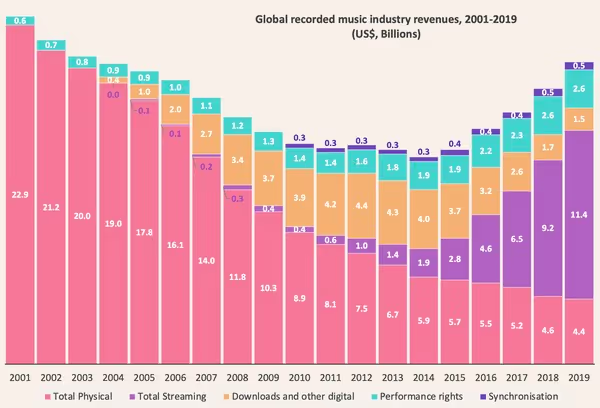Last year’s dividend drought might have shown a few investors just how clumped together their income sources have become.
In the UK, the Investment Association’s equity income sector is dominated by just a few names.
The likes of GlaxoSmithKline, tobacco firm Imperial Brands, BP, insurer Phoenix Group and Astrazeneca appear time and time again as the most popular income-payers in many funds across the country.
And with income-seekers often holding a few of these funds, investors’ dependence on the most common dividend-payers was maybe only obvious when that income was reduced or stopped altogether in 2020.
Imperial Brands made the first cut to its dividend since the company listed on the London Stock Exchange 24 years ago.
The nation’s banks halted income payments completely under advice from the regulator and income stalwart Royal Dutch Shell cut its pay-out by two-thirds at one stage, its first dividend reduction since World War II.
Lower for longer
Inflation worries might be prompting predictions of higher interest rates on the horizon but even a gradual rise from current levels would still keep rates at historic lows.
Since the financial crisis in 2008, low rates have forced income-hungry investors up the risk scale, away from unattractive bonds and into dividend-paying equities.
What that means is, as a nation, we’re more reliant on equity income than ever.
If that looks set to continue, we should learn how to diversify those income sources as much as possible. 2020 taught us a lot of things, for investors this is likely to be one of the biggest takeaways.
Alternative income sources
Beyond the big names in dividends, and similar stories among the so-called bond proxies of recent years like Unilever and Diageo, where can investors look for an income source off the beaten track?
Here are five alternative ways investors can tap into some new dividend stories in 2021.
1. Music royalties

It always seems to be Christmas that brings around the question of “How much do you think they earn from that one song?”
If you’re Mariah Carey, the answer is royalties to the tune of a cool £400,000 every year since 1994 for “All I Want for Christmas Is You”. [1]
But, with public companies now snapping up the rights to some songs, and the royalty-paying process quicker than ever, investors can now access those income streams too.
Once the preserve of music labels, publishers and private investors, firms like Hipgnosis Songs have sprung up to buy song rights and rake in the royalties in the process.
The firm completed its IPO in 2018 and owns the rights to some tracks by Justin Bieber, Rihanna and Beyoncé among others. Importantly for income-seekers, it currently offers a dividend yield above 4% too.
What’s more, with streaming continuing to steal the lunch of physical music sales and downloads, there is the opportunity for capital growth alongside dividends for royalty holders.
While lockdowns will have hit revenues coming in from bar and restaurant soundtracks, at-home streaming has the potential to more than offset these near-term impacts.
The lack of direct correlation between the music sector and broader economic growth could mean this is an interesting diversifier for income-oriented portfolios. But, as always, there are reasons to be cautious.
The make-up of industry revenues can change quickly, as the chart shows. The sector has managed to bring itself back from what seemed like terminal decline due to illegal downloads but there’s no telling how disruption will affect the industry from here.
A steady income stream also relies on company bosses identifying and paying up for hits they predict will stand the test of time. There are a lot of unknowns to the equation, which suggests investors should maybe think of the strategy as a satellite addition to their income stream rather than a core constituent.
2. Renewable Energy
Energy has long been a huge source of income for dividend hunters but a hike in interest in economic, social and governance (ESG) factors has helped investors look away from fossil fuels to the renewable side of the sector.
Investment trusts in the space, with portfolios of environment-first projects, can offer attractive opportunities for income investors like predictable revenue streams, and relatively little sensitivity to changes in the economic cycle.
The global shift towards renewable energy sources is also likely to see governments around the world focus even more heavily on their journeys towards carbon neutrality.
The Renewables infrastructure Group offers investors the chance to invest in a portfolio of around 70 energy projects, mainly in solar, wind and battery storage technology.
The trust invests in energy assets throughout Europe and, unlike a lot of other strategies, pays a quarterly dividend.
A 10% premium for shares might look expensive but a 5% dividend might suit income hunters attracted to the sector.
And if you’re particularly interested in investing in wind energy there is the Greencoat UK Wind trust, which vests in the UK’s wind farms and currently has a dividend yield above 5% too.
3. Social housing
Companies in the social housing space can get lazily thrown into purely ESG-focused strategies. But that distinction risks missing how the sector can complement a mainstream income portfolio.
Real estate investment trust (REIT) Civitas Social Housing invests in social housing projects, aiming to deliver inflation-linked income for investors through its long-term leases.
Its income is ultimately earned through housing benefit payments from central government and, despite the dividend dearth elsewhere in 2020, the trust managed to collect its full rent book during the year.
The company targets a 5% dividend yield from its lease portfolio and could offer investors an inflation-linked source of income for ESG and mainstream investors alike.
Another REIT in the space is Target Healthcare, which invests in UK care homes.
With life expectancies lengthening thanks to higher standards of living and constant advancements in medical technology, the time we spend in our third age is increasing too.
This means care homes are likely to have residents stay for longer, putting pressure on those already oversubscribed.
The trend could mean more consistent income streams from residents as well as the opportunity to invest in more care homes as projects pop up to service our older communities.
The trust trades at around a 5% premium but for that investors get a current dividend yield of around 5.8%.
4. Infrastructure
Investors often turn to infrastructure in search of the sustainability that long-term government-backed projects can give to income streams.
Public-private partnerships in the construction and maintenance of hospitals, schools, bridges and roads can offer defensive characteristics with revenues often linked to inflation.
HICL infrastructure is an example of an investment trust taking part in these long-term revenue streams.
More than two thirds of HICL’s capital is invested in government-backed projects with around 20% allocated to demand-based assets like toll roads. The lower percentage here reflects the risk that wavering demand levels can bring to the overall revenues generated by these assets.
A good example here is the trust’s ownership of retail stores near London’s St. Pancras and its exposure to some train station car parks, which are all dependent on footfall.
But, while this is a UK-focused trust, investors can gain access to overseas infrastructure projects, which currently make up nearly a quarter of the portfolio. Foreign markets here include Ireland, France, Germany, Holland and North America.
Trusts in the space rarely trade at a discount, and HICL is no exception. However, with a premium of around 9% comes a current dividend yield of around 5% which may be attractive to investors aiming to diversify their income sources.
5. Aircraft leasing
One of the more left-field ways investors have been expanding their income network in recent years has been in companies leasing private and commercial aircraft.
The past year has not been kind to anything skybound though. Airlines of all levels and budgets have been grounded, not to mention the safety concerns surrounding Boeing’s Max 737 last March too.
The sentiment has been well-priced into the shares of anything with wings but for new investors, that low base could provide an attractive entry point.
If business travel resumes this year and vaccine rollouts open the gates for holidaymakers, shares in the sector could rerate quickly.
There is still a high level of risk involved here as many of the operators’ fortunes hang on a reopening of the global economy. But, if private and commercial airlines choose to exercise that caution by leasing planes at first, before committing to shelling out for entire fleets, the likes of Air Lease Corp could benefit.
The company offers firms the chance to rent planes instead of buying immediately and potentially having to sit with a fleet of depreciating assets, as many have done in 2020.
Air Lease Corp has not been immune to the tribulations of 2020, and its low yield is a reflection of that. But recent excitement over the prospect of travel returning this year means it has been a beneficiary of rising capital growth especially over the past six months.
At Freetrade, we think investing should be open to everyone. It shouldn’t be complicated, and it shouldn’t cost the earth. Our investment app makes buying and selling shares simple for both beginners and experienced investors and keeps costs low. So download the app and start investing today. You can keep your investments as part of a general investment account, a tax-efficient stocks and shares ISA or SIPP pension.
Source:
1. Capital FM, 12.2020
This should not be read as personal investment advice and individual investors should make their own decisions or seek independent advice. This article has not been prepared in accordance with legal requirements designed to promote the independence of investment research and is considered a marketing communication.When you invest, your capital is at risk. The value of your portfolio can go down as well as up and you may get back less than you invest. Past performance is not a reliable indicator of future results.
.avif)


.avif)



-%25201000x750%2520(1).avif)




